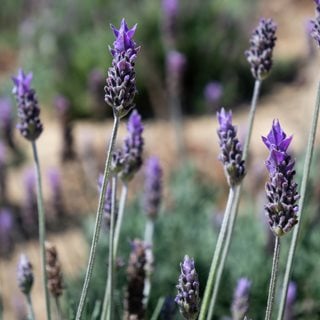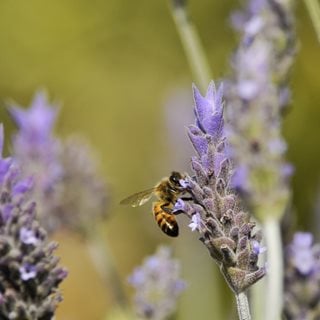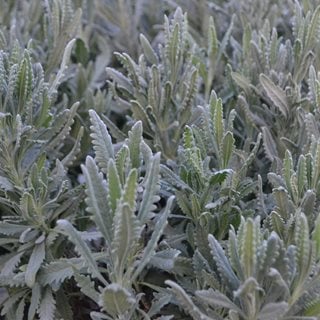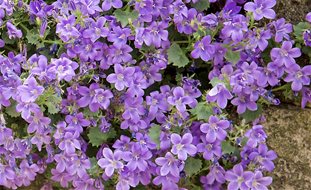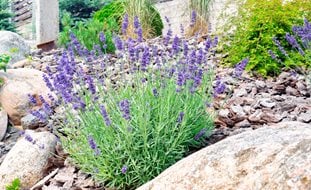Growing & Caring for French Lavender
Also called fringed lavender, this resilient garden shrub thrives in hot, dry climates.Fanciers of French lavender love it for a lot more than its pleasant scent and dainty purple blossoms. Many are captivated by the distinctive serrated foliage that looks like it has been clipped with tiny pinking shears. Others appreciate its exceptionally long bloom time, with the flowers continuing for months on end, from early summer all the way until fall. And some value French lavender’s mounded shrub-like habit, which makes the plant versatile enough to be used as a fragrant, low-growing hedge.
Despite its many attributes, French lavender is very specific about its growing conditions and isn’t well-suited for some climates, particularly areas with cold winters. Here’s advice on what it takes to keep your French lavender healthy and brimming with blooms.
On this page: Basics | Planting | Care | Frequently Asked Questions
BASICS
Botanical name:
Lavandula dentata and hybrids
Note: French lavender was once classified as a sub-type of Spanish lavender (Lavandula stoechas), but is now considered to be a distinct species. However, Spanish lavender is still sometimes mislabeled as French lavender, so be sure to check the plant tag to make sure you’re buying L. dentata. Most commonly grown is gray French lavender (Lavandula dentata var. candicans) which is also a little tougher than the straight species.
Other common names:
Toothed lavender, fringed lavender
Plant type:
Woody perennial/sub-shrub
Zones:
Typically 8-11, although some varieties are hardy down to zone 7.
Native range:
Mediterranean region and the Arabian peninsula
Exposure:
Full sun
Size:
1 to 3 feet tall and up to 5 feet wide
Bloom time:
Early summer to fall. May bloom year-round in climates where frost doesn’t occur.
Foliage:
Most French lavenders have narrow, grayish green, finely-toothed leaves, but there’s also a variety with white variegation. Foliage remains evergreen in warmer climates.
Flowers:
Lavender to deep blue-violet, tipped with pale purple bracts.
Special attributes:
- Heat and drought tolerant, making it ideal for waterwise landscapes
- Attracts bees, butterflies, and other beneficial insects
- Deer and rabbit resistant
- Long bloom season
- Highly aromatic foliage, with an intoxicating rosemary-like scent
Toxicity:
All types of lavender contains a small amount of linalool, a compound that may be toxic to dogs and cats, according to the ASPCA, especially if ingested in large quantities.
PLANTING FRENCH LAVENDER
When to plant:
In the spring after the soil has warmed up and the threat of frost has passed. May also be planted in the fall in areas with mild winters.
Where to plant:
This Mediterranean native requires sunny, hot, dry conditions to flourish. A climate with high temperatures, infrequent rainfall during the growing season, and low humidity is ideal. As with all lavender species, plant in a site that receives full sun (at least 6 hours daily). If not given ample sunlight, plants will bloom poorly, lack vigor, and be less fragrant.
Soil requirements:
Grows best in sandy, nutrient-poor, alkaline soil that provides excellent drainage. Avoid planting in heavy clay or in low spots prone to standing water.
How to plant:
It is generally easier to grow French lavender from nursery starts, since the seeds are small and tend to have a slow and erratic germination rate. To ensure good air circulation, space plants 2 to 3 feet apart, depending on their width at maturity. Water right after planting and continue to water every few days until plants become established. Because good drainage is essential, consider growing your plants in mounds, raised beds, or on slopes.
Growing in containers:
Compact varieties of French lavender (such as ‘Linda Ligon’) are perfect for growing in containers, which is a good option in areas where the plant isn’t hardy because you can move the pots indoors over winter. Be sure to plant in a high-quality, fast-draining potting mix in a container with multiple drainage holes, so your lavender won’t be sitting in standing water. Learn more about how to grow lavender in pots.
FRENCH LAVENDER CARE
Watering:
Established French lavender plants are extremely drought tolerant and only need to be watered during prolonged dry spells. To prevent root rot and fungal diseases, avoid overwatering and keep the leaves dry by watering at ground level or using drip irrigation. During the winter, when plants are dormant, no supplemental watering is needed.
Amendments and fertilizer:
Because French lavender is native to regions having sandy or rocky soils with low fertility, avoid using amendments that enrich the soil, such as compost or other organic matter. If you have dense clay soil, amend it with red lava rock or rice hulls to improve drainage. Also work some lime into the soil if it’s highly acidic (with a pH below 5.5). French lavender grows best in alkaline soils and won’t survive in soil that is too acidic. (Learn how to test the pH of your soil.)
Fertilizing French lavender is rarely necessary and may cause a surge in foliage growth at the expense of flower production. Plants will generally be more robust when grown in poor soil that is low in nutrients.
Pruning and deadheading:
The best time to prune French lavender is in early spring, which will stimulate new growth and increase flower production. You can also prune again in the fall, after the flowers have faded, to reshape the plant and promote denser, thicker growth. Because French lavender will not grow back from old wood, drastically cutting it down to its woody base can kill it, so be sure to make your pruning cuts just above new leaf growth. Throughout the flowering season, deadhead your plants regularly to encourage the development of new blooms. See more on pruning lavender.
Overwintering:
In climates where temperatures dip below zero degrees Fahrenheit, insulate your plants with a winter mulch of evergreen boughs, shredded leaves, or straw, especially if there’s a lack of snow cover. Proper soil drainage is also essential to plant survival in areas with cold, damp winters.
Propagation:
From seed or by stem cuttings taken from new growth in spring, before flower buds form.
Pests and diseases:
Few pest or disease problems, but is susceptible to root rot and powdery mildew, especially in damp, humid climates. Poor air circulation between plants and a lack of pruning can exacerbate the problem.
FREQUENTLY ASKED QUESTIONS
Is French lavender a perennial?
French lavender is a perennial that will live for several years when grown under optimal conditions. However, it is not as long-lived as English lavender and typically has a lifespan of 4 to 5 years.
Is French lavender edible?
French lavender flowers are not suitable for human consumption. However, you can harvest the blooms for use as cut flowers or to add to potpourris and dried floral bouquets.
Will French lavender survive winter?
If the temperatures in your growing zone never drop below freezing, then you won’t need to take special measures to keep your French lavender alive during the winter months, as long as it is planted in well-draining soil. In areas of the country where French lavender isn’t hardy (Zone 7 and below), grow it as an annual or in a container that you can overwinter indoors.
How do French, Spanish, and English lavender differ?
Of the three common lavenders, the French variety is the only one with serrated leaves. It also is larger and longer blooming than its English and Spanish counterparts. Although French lavender fares better in hot climates, English lavender is the only species that will survive harsh freezing temperatures. Don’t confuse French lavender with fernleaf lavender (L. mutlifida), a similar species with more deeply lobed, fern-like foliage.
How do I grow French lavender indoors?
French lavender will do quite well growing in a container indoors if given at least four hours of direct sunlight daily, ideally from a south-facing window. Be sure to water sparingly throughout the winter months, while the plant is dormant, waiting until the top inch of soil feels dry to the touch. Never allow the roots to sit in standing water.
